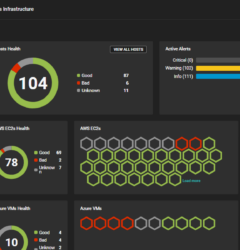
If you’re a business owner, or are responsible for the maintenance of a company’s web presence, you will know that website downtime can happen at the most inconvenient of times.
Unplanned downtime is never welcome. Your website is the online face of your business, and any period in which it is inaccessible to your clients and customers can damage the reputation of your brand.
However, it is also true that downtime is part and parcel of running a website, particularly one which experiences high volumes of traffic throughout the year. With that in mind, it’s crucial that you prepare as best as possible to deal with unscheduled downtime, and respond in a way which minimises any damage to your brand.
In this article, we will take a closer look at what you can do as a business to deal with unscheduled website downtime.
Set up a Downtime Page
While in some cases it might not be possible to set up a maintenance page in the event of unplanned downtime, you may be able to move quickly and set one up if a major period of unplanned downtime occurs on your website.
Maintenance pages are typically used as a temporary placeholder when a site has been taken offline for maintenance or updating. This can inform the user that what they are seeing is not an error but a temporary intermission, with normal service to be resumed shortly.
When a period of unplanned downtime occurs, a visitor to your website will typically be served an unhelpful error page. However, by acting quickly and setting up a downtime page, you can communicate with your visitors that you are aware of the issue, and reassure them that you are working to resume normal service as quickly as possible.
This is much more informative and user friendly than a cold 404 page, which doesn’t provide the end-user with either information or reassurance.
Be Proactive on Social Media
Place yourself in the shoes of a user who visits a website which is offline. Perhaps the first thing you will do is to visit downforeveryoneorjustme.com, but eventually, most users will make their way to social media, either to vent about a negative experience, or to contact a company directly.
By being proactive in your response on social media, you can communicate directly with your customer base, both in terms of public posts updating your audience on the issues the website is experiencing, and in one to one support for individuals who reach out to you directly on social.
Again, this type of proactive response to unplanned downtime helps to keep your customers and clients informed, and gives your company the chance to control the narrative until your website is back up and running again.
Make Regular Website Backups
One of the most effective ways of dealing with unscheduled website downtime is to prepare in advance for the unexpected. By making regular backups of your website you minimise the impact of any period of unscheduled downtime.
A backup is a carbon copy of your website that you can use to restore your website should it be taken offline. By frequently maintaining up to date backups of your website, you will be able to act quickly to restore it in the event of a code error or cyber attack.
You should check with your hosting provider if website backups are included in your current plan. If they aren’t, consider upgrading or moving to a provider who offers this service.
Set up Website Uptime Monitoring
When it comes to dealing with unplanned website downtime, time is very much of the essence. The quicker you can identify the cause of the downtime, the more effective your response will be in dealing with customers and clients who are unable to access your website.
The most important step you can take to ensuring you act quickly when your website goes offline is to actively monitor uptime status using a website uptime monitoring service.
By signing up for an uptime monitoring service, you can take assurance in the knowledge that you will be alerted virtually instantaneously should your website go offline. This knowledge will be invaluable in allowing you to be proactive in dealing with the issue, whether that be in restoring trust on social media, by setting up a downtime page, or in quickly restoring a website backup.
Scopify provides a suite of uptime monitoring tools which are easy to set-up and use, and provide you with insights you need to prepare for unscheduled downtime. Our free plan includes a range of free tools, including page speed monitoring, while our paid plans include SSL Monitoring, Server Monitoring, Domain Monitoring and Virus Scanning.
Click here, to start your free trial today.





